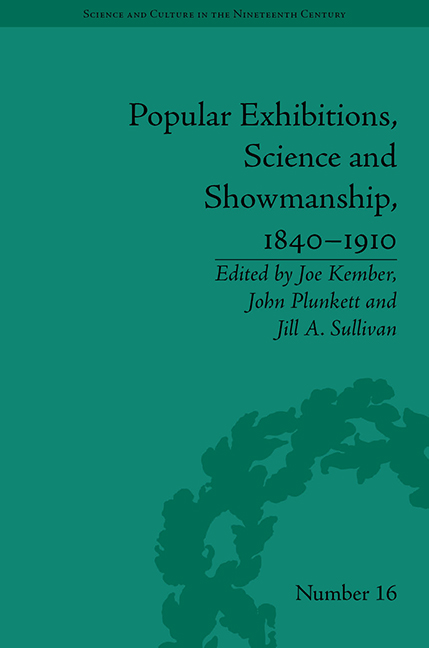Introduction
Summary
A living electrical eel (Gymnotus) was brought here from South America in 1838: its length was forty inches, and it resembled in appearance dark puce-and-brown plush, such as was then in fashion for waistcoats. Professor Faraday obtained from it a most intense electric spark; and by one shock not only was the galvanometer deflected, but chemical action and magnetic induction were obtained. The eel died in 1842. There had not been one exhibited in London for more than sixty years, when five shillings was the admission charge for each visitor.
The connection between science, showmanship and popular display was enduringly compelling for nineteenth-century audiences in Britain. Writing in 1872, in the Leisure Hour, John Timbs remembered some of the most popular of the scientific exhibitions that had taken place in London during the preceding fifty years. The electric eel employed by Faraday was, in fact, one of several that would be exhibited at the Adelaide Gallery of Practical Science on the Strand – this time for just one shilling – where feeding time proved to be an especially attractive performance once it was realized that the fishes captured their prey by discharging an electric shock. Faraday's experiment and more general zoological accounts of the acquisition, careful nursing and behaviour of the eel were reported widely, not least by Timbs himself, who, as founding editor of the Year-Book of Facts in Science and Art, had given the fish star-billing on the frontispiece of the 1840 edition.
- Type
- Chapter
- Information
- Publisher: Pickering & ChattoFirst published in: 2014



